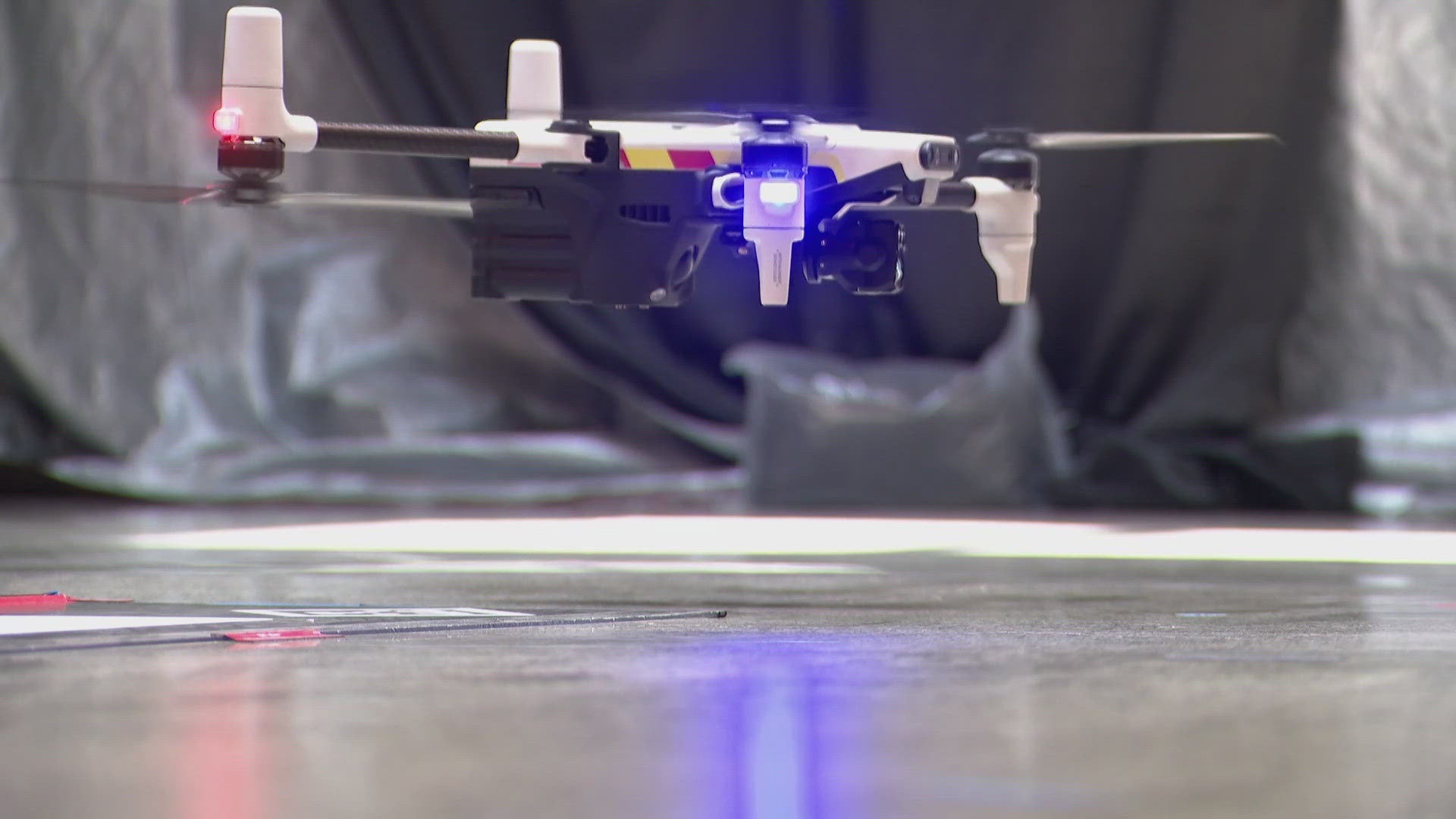REDMOND, Wash. — In a recent KING 5 interview, police in south King County said it's possible that they will soon start using a drone that responds to 911 emergencies and gathers evidence before officers even arrive.
"We are not actively doing that right now, but it is on the horizon," said Renton police officer Matthew Nugent.
But at another western Washington police department, we're learning this type of technology is already being utilized: the Redmond Police Department.
"This green line is the path that the drone is gonna fly in," said Sgt. Steve Lincoln with RPD. Redmond officers allowed KING 5 to shadow their work in their drone flight center on Tuesday.
As of April 2, they have been deploying a DJI drone to the scene of most 911 emergencies so that they can get a bird's eye view, even before officers arrive.
"Redmond is the first department in the area to actually have a full-time 'Drone as a First Responder' program," said Redmond Police Chief Darrell Lowe.
Their drone lives in a weather-proof nest on the roof of City Hall, and within 45 to 60 seconds, the drone can reach flying altitude and respond immediately to the scene of the call.
Lowe said their current drone is "Typically able to get there within three minutes or less and provide an aerial perspective to the ground units to supervisors so we have situational awareness."
The goal, he said, is to inform officers on how to prioritize their response. In a national shortage of police officers, Lowe said this is helpful in managing resources.
"We have had 102 responses with our drone as a first responder. We've arrived at 88% of the time prior to my ground unit," said Lowe.
He continued, "This is an enhancement. We will never replace the need for commissioned police officers. But this enhances my officers' capability. It helps to reduce the workload."
Currently, Redmond's using a drone that was manufactured in China, but soon, they're tapping local drone company BRINC Drones, which developed and tested in Seattle's Fremont neighborhood.
"It goes around 40 to 43 miles per hour. So you know, and we also can go from direct point-to-point so you're not going through traffic," said David Benowitz, Vice President of Strategy and Marketing Communications.
The 911 responder has a speaker and microphone for two-way communication, as well as a thermal camera and blue and red police lights. But BRINC's 911 Responder drone is not just for crime.
"Really, we encourage agencies to deploy for every single situation," he said. "You don't know when eyes on scene will be beneficial."
That includes responding to the scenes of fires or even for finding missing hikers, Benowitz said. In addition, the BRINC Responder has the capability to drop off life-saving medications like Narcan if someone were to be suffering from an overdose.
"They'd be able to deploy a Responder within seconds and essentially deploy Narcan from that drone," said Benowitz.
In Redmond, as a result of this pilot program, Lowe said one in five patrol cars is no longer being dispatched to calls, specifically because of the drone's ability to recognize whether the call requires it.
But groups like the ACLU have shared their concerns for privacy, and that is a concern some Redmond residents brought up as well.
“If the police have very clear rules and guidelines about how they’re going to use their drones, I think I would be okay with it," said Redmond resident Adolfo Boisseauneau.
Others said they were all in.
Mandy Cummins, another Redmond resident, said, "Seems super efficient. I have no problem with it whatsoever... I think it’s a great idea.”
Still, Lowe acknowledges the concerns.
"We're not just randomly flying, gathering information on things or people or anything like that," he said. "It's no different than a body-worn camera. So, it becomes part of that particular call for service. So it is, you know, video evidence subject to the same policies, rules."
Lowe added, "As the drone is responding to that particular call, the camera is set at the horizon. So it's not, you know, it's not capturing images or people en route."
Lowe said they have been working very closely for several months with BRINC and are actively providing feedback about how it's working for them.
"Their particular product is going to be a game-changer in this particular space. It is purpose-built specifically for first responders," said Lowe. "It's very exciting. And I'm very much looking forward to what that looks like when we get to deploy those particular devices."

